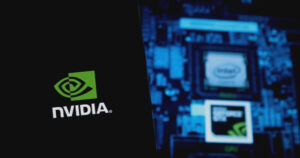Jessie A. Ellis
May 23, 2025 09:56
NVIDIA’s latest innovation, NeMo Guardrails, is set to revolutionize large language model (LLM) streaming, enhancing both latency and safety for generative AI applications through real-time validation of token outputs.

Unpacking NVIDIA’s NeMo Guardrails: A Game Changer for AI
NVIDIA has recently launched NeMo Guardrails, a groundbreaking innovation aimed at revolutionizing how large language models stream data. As organizations increasingly turn to generative AI for applications ranging from customer service to content creation, the ability to stream real-time, token-by-token responses is becoming indispensable. However, this innovation brings with it the pressing issue of safety and reliability in interactions—the very challenges that NeMo Guardrails is designed to tackle.
Advancing Performance: Beyond Traditional Response Models
In traditional settings, users experience delays waiting for full responses from LLMs, a bottleneck in environments that demand quick interactions. NeMo Guardrails drastically reduces the time to first token (TTFT), allowing users to receive immediate responses—an essential upgrades for applications needing rapid feedback. This principle is further enhanced as initial responsiveness gains independence from steady-state throughput, resulting in a fluid user experience that keeps pace with the user’s needs.
Balancing Safety with Responsiveness
One of the standout features of NeMo Guardrails is its integration of robust safety controls within the streaming framework. Using a sliding window buffer, the system offers context-aware moderation, ensuring that potential issues—such as prompt injections or unwanted data exposures—are flagged before they can impact user experience. This layer of protection is critical for businesses that cannot afford lapses in data integrity.
Customizing Your Streaming Experience
Adopting NeMo Guardrails necessitates thoughtful configuration tailored to specific applications. Users can customize chunk sizes and context settings to suit the unique requirements of their systems. Larger chunks facilitate enhanced context, making it easier to spot anomalies or “hallucinations,” while smaller chunks can significantly cut down on latency. Notably, NeMo Guardrails is versatile, supporting various LLMs, including popular models from HuggingFace and OpenAI, easing the integration process across platforms.
Why This Matters for Generative AI Applications
By enabling streamlined interactions, NeMo Guardrails shifts generative AI applications from a conventional, rigid response model to a dynamic format. This transition optimizes both throughput and resource efficiency, creating opportunities for progressive rendering and real-time engagement. For enterprise applications, such as AI-driven customer support, this means not only faster responses but also a more engaging experience for users—a win-win as businesses increasingly leverage AI to enhance service delivery.
In summary, NVIDIA’s NeMo Guardrails stand at the forefront of LLM streaming, merging enhanced performance with critical safety measures. This innovation empowers developers to create responsive, secure AI applications—essential for maintaining competitiveness in an ever-accelerating digital world.
Interested in elevating your own AI initiatives? Explore more insights and detailed guides on the Extreme Investor Network, where we empower you to navigate the future of technology with confidence.
Image source: Shutterstock

